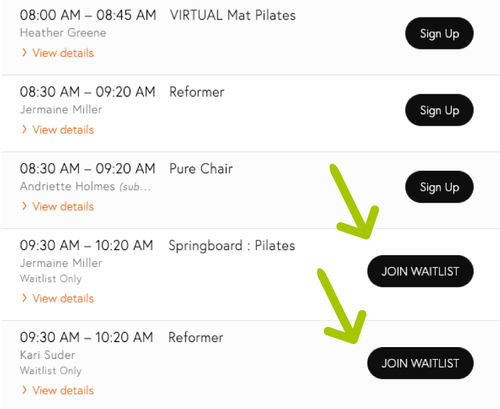6 Essential Steps to Build a Professional, Eye-Catching Website
Creating a professional and eye-catching website is crucial for building credibility and attracting visitors to your business. Whether you’re launching a small business or a personal portfolio, your website is often the first impression potential customers get. However, many struggle with designing a site that looks polished and professional. Without the right elements, your website may seem cluttered, amateur, or difficult to navigate.
In this blog, we’ll cover six essential steps to help you build a professional website that not only looks great but also serves its purpose effectively. Let’s dive into each step to create a site that stands out and makes an impact.
Step 1: Start with a Clear Purpose and Goal
The Problem
One common mistake is creating a website without a clear vision. If your purpose isn’t well-defined, your site can become a confusing mix of pages, making it hard for visitors to understand what you offer. Many businesses aim for flashy designs but forget to focus on the user experience, which can lead to high bounce rates.
The Solution
Before you even begin designing, take time to clearly define the purpose of your website. Are you trying to sell products? Build a brand? Share a portfolio? Your website’s purpose should dictate its layout and content.
Key Points to Consider:
- Identify your primary goal (e.g., e-commerce, service-based, or informational site).
- Plan the structure based on the needs of your audience.
- Make sure that every page leads toward your overall objective (e.g., sales funnel, lead generation).
This clear focus will keep your website streamlined, helping visitors easily understand your offerings.

Step 2: Prioritize User Experience (UX) and Site Navigation
The Problem
Poor navigation frustrates users and can lead them to leave your site quickly. A website with confusing menus, broken links, or slow loading pages will turn potential customers away.
The Solution
A seamless user experience (UX) is critical for keeping visitors engaged. Your website should be easy to navigate, fast-loading, and mobile-friendly. Focus on creating intuitive navigation menus and minimizing page load times. Simple designs often outperform overly complex ones in terms of usability.
Tips to Enhance User Experience:
- Keep the navigation simple with clearly labeled menus.
- Make sure important information (like contact details or calls to action) is easy to find.
- Regularly test your website on different devices to ensure it’s fully responsive.
Step 3: Use High-Quality Visuals and Branding
The Problem
Using low-quality images or inconsistent branding can make your site appear unprofessional. Stock images that don’t reflect your brand can disconnect your message from your audience.
The Solution
A professional website uses high-quality visuals that align with its branding. Custom imagery, professional photography, and clear typography give your site a polished look. Make sure to incorporate your brand colors, fonts, and logo consistently across the site.
Don’t underestimate the power of visuals when it comes to making a strong first impression.

Step 4: Choose the Right Website Platform and Template
The Problem
Selecting the wrong platform can limit your customization options, slow your site down, or require constant maintenance. Some platforms also come with complicated coding requirements, which is a hassle for non-tech-savvy users
The Solution
Choosing the right website platform is crucial for building a professional site. Consider platforms like WordPress, Wix, or Squarespace, which offer user-friendly interfaces, a wide range of design templates, and customization tools. For those with coding skills, WordPress is an ideal option for flexibility. For beginners, Wix or Squarespace may be more suitable as they offer drag-and-drop design features.
Key Features to Look For:
- Responsive design templates that adjust to mobile, tablet, and desktop screens.
- SEO tools built into the platform to help you rank better on search engines.
- Customization options for a unique and professional look
Step 5: Create Engaging and SEO-Optimized Content
The Problem
Even if your website looks great, poor content can result in low engagement and poor search engine rankings. Visitors are less likely to stay on a site with poorly written or irrelevant content.
The Solution
Content is king—and that applies to your website, too. For a professional site, ensure all written content is clear, concise, and relevant. Well-written, engaging content helps you connect with your audience and improve SEO rankings.
- Use SEO-friendly keywords throughout your site without keyword stuffing.
- Write informative blog posts or articles to provide value to visitors.
- Ensure all content (headlines, meta descriptions, alt texts) is optimized for search engines to improve your ranking.
- Use internal and external links to provide further reading and authority to your website. For example, link to your service pages within blog posts.

Step 6: Ensure Mobile Responsiveness and Speed Optimization
The Problem
With more than half of global web traffic coming from mobile devices, having a site that doesn’t load properly on phones or tablets can cost you visitors. In addition, a slow website frustrates users and leads to high bounce rates.
The Solution
Mobile responsiveness is no longer an option—it’s a necessity. Ensure your site is fully responsive, meaning it adjusts its layout based on the user’s screen size. This will improve the user experience for mobile visitors and help your SEO performance, as Google prioritizes mobile-friendly websites.
How to Optimize for Mobile and Speed:
- Use responsive design templates that automatically adapt to different screen sizes.
- Compress images and reduce file sizes to speed up load times.
- Minimize the use of heavy scripts or complex features that could slow down your site.
Conclusion
Building a professional, eye-catching website doesn’t have to be overwhelming. By following these six essential steps—defining your website’s purpose, choosing the right platform, prioritizing user experience, using high-quality visuals, creating engaging content, and ensuring mobile responsiveness—you’ll create a site that stands out from the competition. A well-designed website will not only boost your credibility but also enhance your user engagement and improve search engine rankings.
Remember, the key to a professional-looking website is a balance of aesthetics and functionality. Focus on delivering a seamless experience to your users, and the results will follow.





